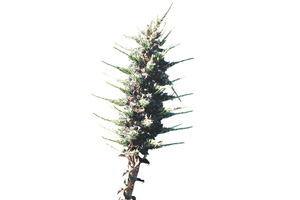Currently, Chile is undertaking several actions aimed at protecting flora, especially endemic flora. The following can be counted among these initiatives:
– Conservation, protection and a sustainable management of wild flora on the part of the Servicio Agrícola Ganadero (SAG, Agriculture Cattle Service).
– Sistema Nacional de Áreas Silvestres Protegidas del Estado (SNASPE, National System of State Protected Wild Areas), established by the objective of protecting the biodiversity of some of the country’s areas. This initiative is being developed by the Corporación Forestal Nacional (CONAF, National Forest Corporation).
– The propagation of plants to recover the population of threatened species.
– Subscription to international treaties related to the conservation of plant species.
– Private initiatives to form Protected Wild Areas in charge of non-Governmental Organizations.
The SAG and flora
In the subject of wild life, the SAG contributes to the conservation and sustainable management of flora, through the enforcement of regulations and making sure they are complied with.
A few decrees related to the survival of plant species are:
– Supreme Decree Nº366 (from 1944), which regulates the cutting down and exploitation of native species.
This way, this decree establishes that the Prosopis tamarugo, Chilean Mesquite (Prosopis chilensis), Chilean Palo Verde (Geoffroea decorticans), Porlieria chilensis, Olivillo (Porlieria chilensis), Cordia decandra, Roman Cassie (Acacia caven), Boldo (Peumus boldus), Mayten (Maytenus boaria), Litre (Lithraea caustica) and Kageneckia oblonga may only be cut down or exploited between the months of April and June. It is totally prohibited outside of this period. An exception to this measure is the case of the Boldo, which can be cut and exploited only between the months of December and March.
– Supreme Decree Nº129 (from 1971), stipulates the protection of the Chilean Bellflower (Lapageria rosea), forbidding any total or partial uprooting and its commercialization on national soil.
– Supreme Decree Nº908 (from the year 1941), which regulates the cutting and exploitation of the Chilean Wine Palm (Jubaea chilensis). In this way, owners and tenants of places where Chilean Wine Palms are found are required to declare the existence of these trees in order to control their exploitation. They can only be cut down with SAG’s permission.
All of these measures, even when they are currently valid in our legislation, are not always funded, nor are their obligations completely fulfilled.
Chilean National System of Protected Areas (Spanish acronym SNASPE)
Under this system (administrated by CONAF), there are three kinds of protected areas in Chile: National Parks, National Reserves (of fauna and of forests) and National Monuments.
– National Park: an area that is generally extensive, where there are diverse environments that are unique or representative of the country’s natural biological diversity. They are not significantly altered by human action, they are capable of auto-perpetuating themselves and their flora and fauna species or geological formations are of special educational, scientific or recreational interest. Its objectives are to preserve samples of natural environments and of cultural or scenic features associated to them, to continue evolutionary processes, and to a degree compatible with the objectives, to carry out educational, investigative or recreational activities.
– National Reserve: an area whose natural resources must be conserved and used with special care, according to the susceptibility of these areas to suffering degradation or because of their importance in protecting the well-being of the community. Their objectives are the conservation and protection of ground resources and threatened species of wild flora and fauna, the maintenance and improvement of water power and the application of technology for their rational use.
– Natural monument: an area that’s generally of reduced size, characterized by the presence of native species of flora or fauna or by the existence of geological sites relevant for their scenic view or cultural or scientific importance. Their objective is to preserve the natural, cultural or scenic environment, and to develop educational, recreational or investigative activities according to measures compatible with the objective.
Techniques for propagating plants
– Greenhouses: these are built of metal or wood and installed with a north-south orientation in order to facilitate a good airflow and a greater quantity of light in the winter months. They help conserve plants because they allow the control of water loss, temperature and light, and they possess a temperate substrate and good drainage.
– Shadehouses: these are structures that are mainly used to protect plants from the effects of high radiation.
They are also used, to a lesser extent, to shelter plants from frosts.
– Intermittent misting: although this system is relatively expensive, its installation maintains a film of water on the leaves, which produces high humidity and lowers the temperature of air and leaves. This decreases the degree of transpiration, which encourages a more rapid growth of plants.
– Heated propagation bed: this kind of method, which is installed below a layer of soil (substrate), maintains a temperature of 14 to 16ºC, accelerating germination or the rooting of cuttings. The heat source can be electric, with hot water (pipes) or with gas.
– Germination chamber: this is specialized equipment which creates a light, temperature and humidity controlled environment.
It is very costly and is used mainly in universities and research institutes.
International treaties
Chile has signed several treaties as a member of the United Nations (UN). Some of the most important agreements are:
– CITES (the Convention on International Trade in Endangered Species of Wild Fauna and Flora) is an agreement incorporated into Chile’s legal code in 1975 which regulates the international commerce of wild threatened plant species, or those at risk of becoming threatened.
– Washington Convention: this was signed in 1967 and helps protect flora, fauna and natural areas of America.
– Convention on Biological Diversity: among its main objectives are the conservation and sustainable use of endemic flora. This was signed in May of 1992 in Rio de Janeiro and ratified in September of 1994.








